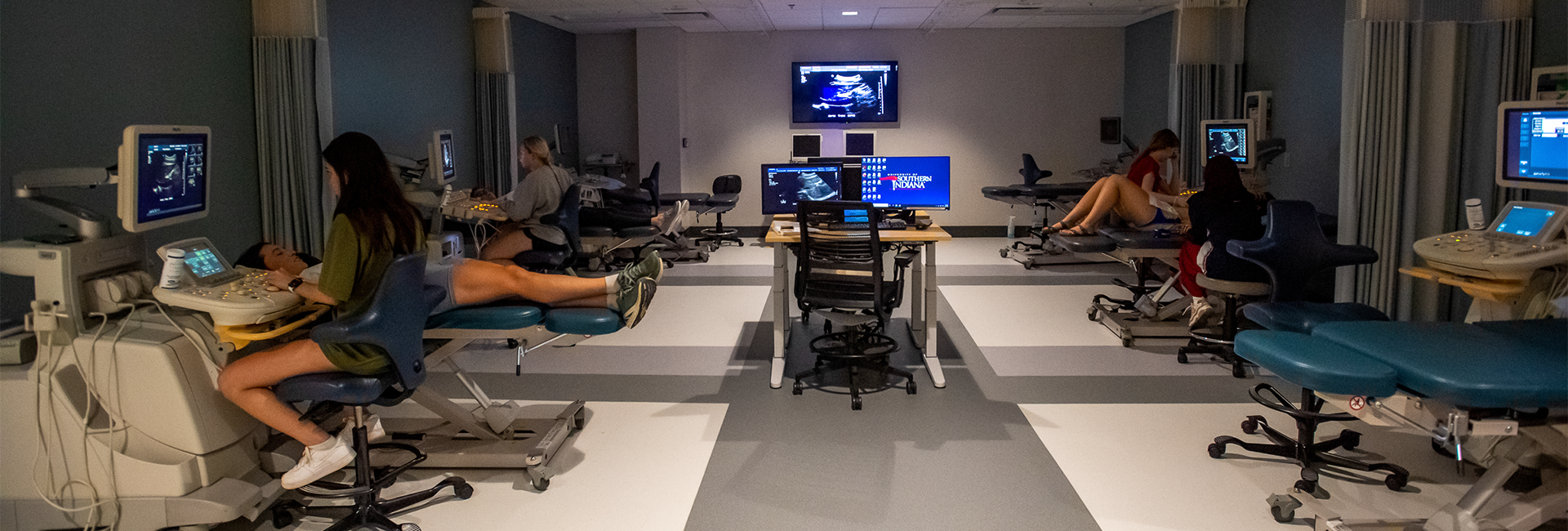How long is the sonography program?
The sonography program at USI provides a curriculum which includes didactic courses in conjunction with laboratory and clinical experience. The curriculum consists of 1 1/2 years of pre-requisite general education courses and 2 1/2 years of professional education work once the student is accepted into the program.
What kind of degree will I receive when I am done with the curriculum for USI's sonography Program?
After completion of the four years of required curriculum, students will receive a Bachelor of Science degree in Diagnostic Medical Sonography. The student will be eligible to apply for credentialing examinations administered by the American Registry for Diagnostic Medical Sonography (ARDMS).
Is USI's sonography program accredited?
Yes, the DMS program at USI is accredited in Abdominal-Extended, Obstetrics and Gynecology, Vascular, and Cardiac concentrations by the Commission on Accreditation of Allied Health Education Programs.
How many students are accepted into the program each year?
The sonography program is limited in the number of students that may be accepted each year. USI, in collaboration with the clinical affiliates, reserves the right to determine the number of students enrolled in each beginning class. Currently, the program is accepting 15 students for each beginning class.
How many students apply to the program each year?
Admission to the sonography program is very competitive. There are approximately 25-40 students who apply and are interviewed each year for positions in the program.
What is the employment outlook in this field?
The following information comes from US Department of Labor Bureau of Labor Statistics:
Employment of diagnostic medical sonographers is expected to grow 12% from 2019 to 2029 due to the increasing demand for diagnostic imaging and therapeutic technology. In addition to job openings from growth, some job openings will arise from the need to replace sonographers who leave the occupation permanently.
Opportunities should be favorable because sonography is becoming an increasingly attractive alternative to radiologic procedures, as patients seek safer treatment methods. Unlike most diagnostic imaging methods, sonography does not involve radiation, so harmful side effects and complications from repeated use are rarer for both the patient and the sonographer. Sonographic technology is expected to evolve rapidly and to spawn many new sonography procedures, such as 3D- and 4D-sonography for use in obstetric and ophthalmologic diagnosis. However, high costs may limit the rate at which some promising new technologies are adopted.
Hospitals will remain the principal employer of diagnostic medical sonographers. However, employment is expected to grow more rapidly in offices of physicians and in medical and diagnostic laboratories, including diagnostic imaging centers. Healthcare facilities such as these are expected to grow because of the strong shift toward outpatient care, encouraged by third-party payers and made possible by technological advances that permit more procedures to be performed outside the hospital.
What are the potential earnings for this field?
The following information comes from US Department of Labor Bureau of Labor Statistics:
Median annual wage for diagnostic medical sonographers was $81,350 in 2022.
